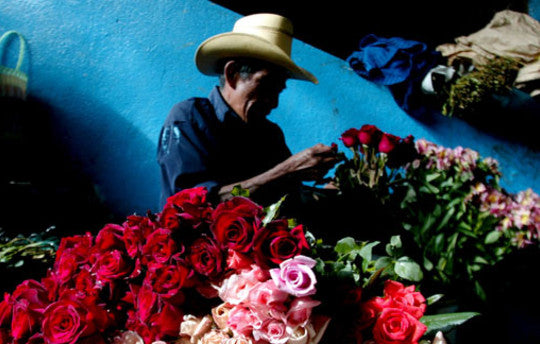Your Cart is Empty

Dominican pride in merengue is synonymous with a sense of statehood: to love merengue is to love the island itself. The genre is easily identified by its beat pattern – aggressively unsyncopated, its military rat-a-tats land squarely on 1 and 3. The instrumentation was originally acoustic – an accordion leading, with backing from a box bass, a guayo (metal scraper) and a two-ended tambora drum, but these days merengue usually blends this traditional orchestration with contemporary electronics and salsa-influenced horn sections. Virtuoso floor shows are common, featuring dancing in formations and impossibly fast hand-jives, but at the core are the singers – the most traditional voice is a reedy, nasal style of which Juan Luis Guerra is the principal exponent today.
 A fast-paced Latin dance synonymous with the Dominican Republic, merengue is hugely popular throughout Latin America. Originally played in trios, the urban sound that is today's merengue is played on the saxophone, the electric guitar, the two-headed tambora drum and marimba. Filling dancefloors across the Spanish-speaking world, this album features some of the best contemporary merengue artists around, including Chichi Peralta, Caña Brava and La Makina.
A fast-paced Latin dance synonymous with the Dominican Republic, merengue is hugely popular throughout Latin America. Originally played in trios, the urban sound that is today's merengue is played on the saxophone, the electric guitar, the two-headed tambora drum and marimba. Filling dancefloors across the Spanish-speaking world, this album features some of the best contemporary merengue artists around, including Chichi Peralta, Caña Brava and La Makina.
Merengue most likely developed from the Haitian danza form mereng, which emerged during the eighteenth century among the mulatto classes. It infiltrated the Dominican Republic (the then Spanish colony of Santo Domingo) via fleeing French soldiers escaping the Haitian revolution, where it adopted the final touch of the accordion (imported by German traders), consolidating the classic merengue form.
Merengue’s ‘golden age’ was under Rafael Trujillo’s dictatorship from the 1930s until his assassination in 1961. He promoted the music as a populist symbol of national expression, resulting in larger merengue orchestras developing to cater for urban audiences. The genre continued to thrive after Trujillo’s fall, and with a wave of migration to the major cities of North America, a new context for merengue emerged.
Back home, the key figure in the development of a modern merengue sound and image was Johnny Ventura, who in the 1970s set about marketing his music to compete with the US imports. Ventura was a pioneer merengue pop icon, using large-scale advertising, trademark floor shows and an Americanised sound.
Another towering figure in modern merengue, Juan Luis Guerra, emerged on the scene in 1984, with his group 4:40 (the ‘perfect note’) and a completely new concept. He innovatively slowed down the merengue, softening it with harmonies inspired by The Beatles, adding a light, jazzy touch. He took a fresh look at Dominican roots, -bringing into the music a back country bolero-type rhythm known as bachata. This is best heard on his seminal Bachata Rosa album (1990), which propelled Guerra to the top of the Billboard Latin charts.
In the mid-1990s the merengue scene began picking up influences from hip hop and house. The hottest name to emerge in this so called merenhouse style is Elvis Crespo, who fused US-style house music with a mainstream pop merengue style. Others followed, particularly in New York, where many big merengue hits were remixed, a transition made easy by merengue’s regular beat structures. Other New York based merenhouse superstars include the band Fulanito, Poyecto Uno, Upstart Ilegales and Dark Latin Groove.
You can now study these genres through our partner site World Music Method. Click HERE to view the list of courses.